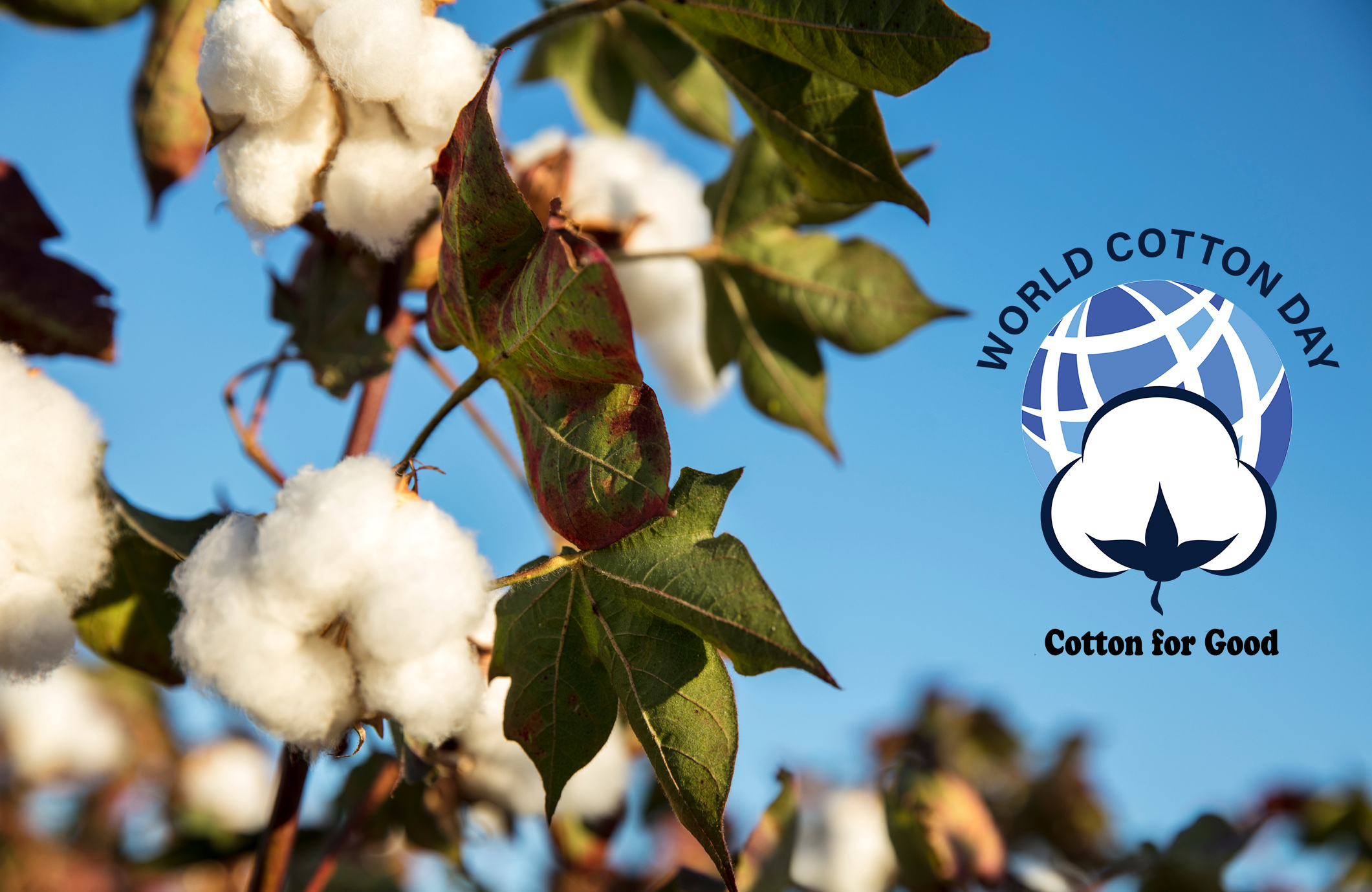In a matter of days, countries around the globe will be recognizing World Cotton Day, an event held annually on October 7 as both a celebration of cotton and an opportunity to show its enduring positive impact. As stakeholders from the global cotton community come together to raise the visibility of the fiber and discuss its critical economic and agricultural roles, it’s an opportune time to review how consumers from all around the world both perceive and use cotton.
To reflect on its importance, a permanent theme for World Cotton Day is ‘Cotton for Good.’ It’s short, sweet, easy to remember and most of all, it’s accurate.
Mike McCue, Director of Communications, International Cotton Advisory Committee (ICAC)
World Cotton Day began in 2019 after four cotton producers in sub-Saharan Africa – Benin, Burkina Faso, Chad, and Mali (known as the Cotton Four) – proposed the annual event to the World Trade Organization. Since its inception, over 70 different cotton entities and countries from around the world have participated in World Cotton Day events, celebrating cotton throughout the supply chain.
The International Cotton Advisory Committee’s (ICAC) Mike McCue, director of communications, says in the short time that World Cotton Day has been in existence, it’s already bringing more momentum to the cotton industry.
“Visibility is important to ensure people understand just how important cotton is to the world, especially vulnerable people in less developed countries,” he says. “To reflect on its importance, a permanent theme for World Cotton Day is ‘Cotton for Good.’ It’s short, sweet, easy to remember and most of all, it’s accurate.”
“Cotton meets more than a quarter of the world’s textile demand, but uses only 3 percent of arable land,” McCue explains. “It provides food and fiber but also a whole lot more, like pharmaceuticals, charcoal, animal feed, fertilizer, currency notes and cosmetics. It even helps in the fight against climate change by keeping synthetic microfibers out of our waterways and food chain, and sequestering carbon in its biomass.”
At the consumer level, cotton is an enormously popular fiber around the world. Globally, 78 percent of consumers say they would prefer the clothing in their wardrobes be made of cotton (40 percent), denim (22 percent), or cotton blends (16 percent), according to the Cotton Council International and Cotton Incorporated’s 2023 Global Lifestyle Monitor™Survey. The cotton choices are trailed by polyester/Dacron at 7 percent, spandex/lycra (5 percent), rayon (5 percent), wool (3 percent), and hemp (2 percent).

The countries with the highest preference for the cotton categories are India (90 percent), Italy and Mexico (each 89 percent), Indonesia (88 percent), Turkey (86 percent), Colombia (85 percent), United Kingdom (83 percent), Germany (82 percent), and the U.S. (80 percent), according to the 2023 Global Lifestyle Monitor™Survey.
Additionally, the majority of consumers worldwide (60 percent) say they would pay more for natural fibers such as cotton for their wardrobe pieces, according to the 2023 Global Lifestyle Monitor™Survey. Notably, that figure is significantly higher in India (81 percent), Turkey (78 percent), Indonesia (76 percent), Colombia (70 percent), China (68 percent), Vietnam (67 percent), and Mexico (66 percent).
Clearly, cotton is a popular textile. But as McCue pointed out above, it’s also an important commodity. The United Nations describes how cotton is a life-changing product worldwide that supports 32 million growers (almost half of them women) and benefits more than 100 million families across 80 countries and 5 continents.
“It is true that cotton is really important to developed economies, but for least-developed and developing countries, it is a safety net,” the U.N. states. “Cotton is a major source of livelihoods and incomes for many rural smallholders (farms supporting a single family) and laborers, including women, providing employment and income to some of the poorest rural areas in the world.”
This year, the topics to be discussed at World Cotton Day include the benefits people obtain from cotton production, sustainability, women in cotton, and brand and retailer partnerships.
Heading into discussions, brands and retailers should know that consumers around the world consider cotton to be the most comfortable fabric (70 percent), according to the 2023 Global Lifestyle Monitor™Survey. They also consider cotton to be the softest (69 percent), highest quality (64 percent), most authentic (63 percent), most sustainable (63 percent), and most versatile (51 percent).
Further, consumers globally prefer cotton in their T-shirts (61 percent), underwear (61 percent) and pajamas (61 percent), according to the 2023 Global Lifestyle Monitor™Survey. They also prefer cotton socks (59 percent) and casual shirts (52 percent).
Cotton is also preferred for athletic shirts by the majority of consumers in Mexico (58 percent), Colombia (57 percent), Italy (54 percent), and the US and Turkey (both 53 percent), according to the 2023 Global Lifestyle Monitor™Survey. It is the preferred fiber for casual pants among most consumers in Germany (61 percent), Italy (55 percent), the United Kingdom (53 percent), and Indonesia (52 percent). Further, it is the preferred fiber for sweats in the US (58 percent), Germany (60 percent), the UK (53 percent), and Italy (50 percent). It’s even the preferred fabric for dresses among most shoppers in the United Kingdom (57 percent), Italy (55 percent), the US (53 percent), and Germany (51 percent).
Given the wide-ranging consumer preferences for cotton as well as its global popularity, McCue says, “While we emphasize cotton on the seventh of October, spreading the truth about all the positive things that cotton brings to our lives is something we should be doing all year long.”
